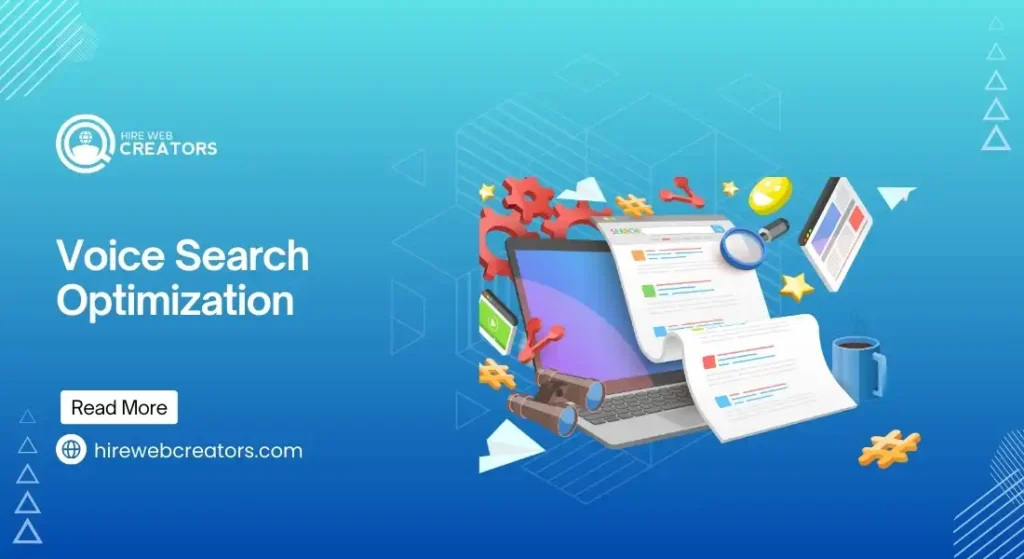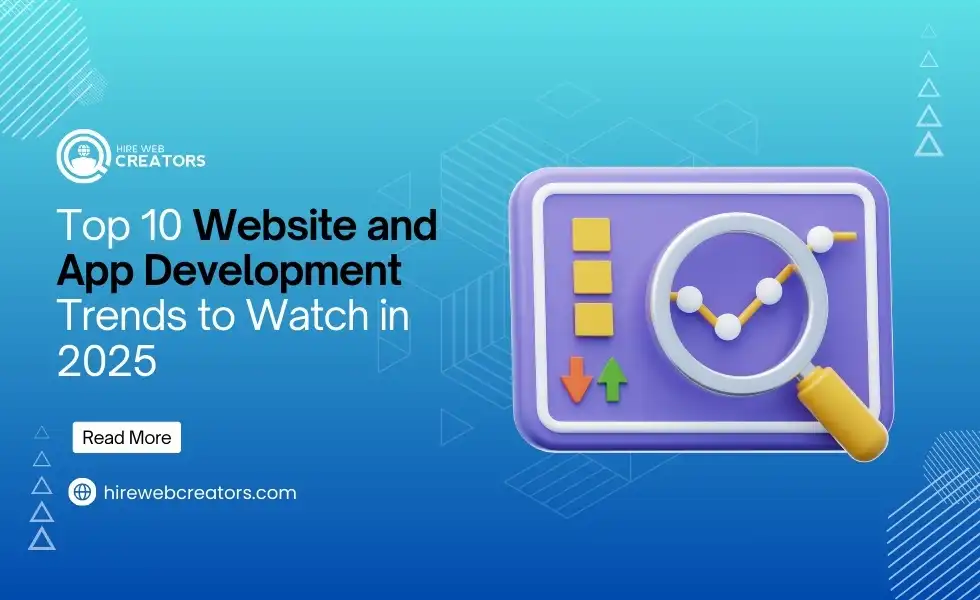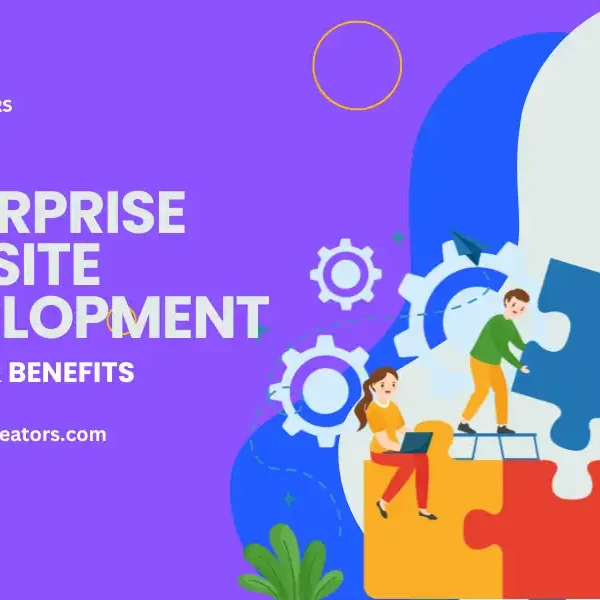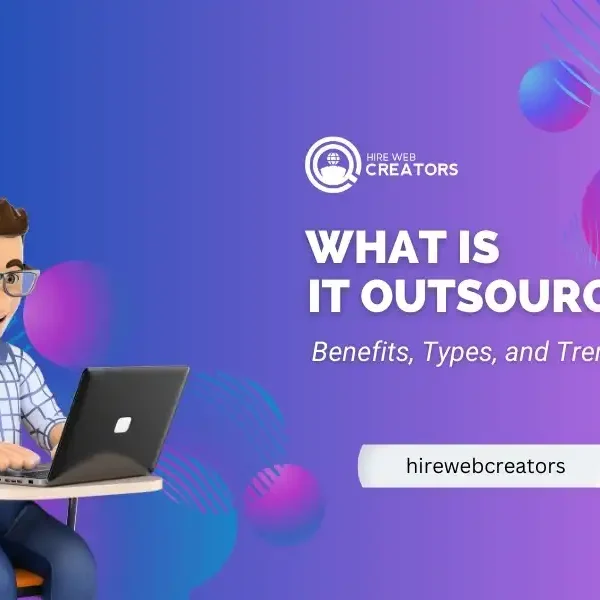Planning your next digital project? Discover the top 10 website and app development trends set to dominate in 2025! The digital landscape is evolving rapidly, with over 75% of users judging a website’s credibility based on its design. Staying ahead of emerging trends in website and app development is now essential for businesses aiming to remain competitive.
Here’s why it matters:
- User Expectations: Outdated designs and features can lead to a poor user experience, costing you potential customers.
- Competitive Advantage: Leveraging the latest trends can help you stand out, enhance user engagement, and boost conversions.
In this blog, we’ll explore the Top 10 Website and App Development Trends to Watch in 2024, offering practical examples and expert insights to help you implement these trends effectively and future-proof your digital strategy.
Table of Contents
1: Progressive Web Apps (PWAs) Will Dominate in 2024
What are PWAs?
Progressive Web Apps (PWAs) are web applications that deliver an app-like experience directly through the web browser. They combine the best features of web and mobile apps, offering users seamless performance without the need for downloads from app stores.

Key Benefits:
- Offline Access: PWAs can function without an internet connection, thanks to service workers.
- Faster Load Times: PWAs utilize caching to load content quickly, enhancing user satisfaction.
- Improved User Experience: The responsive design and smooth performance mimic native apps, increasing engagement.
Example:
Popular companies like Twitter and Starbucks have successfully adopted PWAs, resulting in faster loading speeds and increased user retention.
Expert Tip:
To start implementing PWAs, businesses should focus on building responsive web designs, leverage service workers for offline capabilities, and ensure their websites are mobile-friendly to maximize user engagement.
2: The Rise of Voice Search Optimization
The Shift to Voice Search:
With the growing popularity of smart speakers and voice assistants like Amazon Alexa and Google Assistant, voice search is transforming how users interact with websites and apps. More people now prefer speaking their queries, making voice search optimization a key trend for 2025.

Core Principle:
Focus on creating conversational content tailored to natural language queries. Voice searches are typically longer and more specific, so it’s essential to optimize for user intent rather than short keywords.
Example:
Brands like Domino’s Pizza have integrated voice search capabilities, allowing users to order through Alexa or Google Assistant seamlessly, improving user convenience and engagement.
Step-by-Step Guide:
- Use Natural Language: Write content in a conversational tone, anticipating how users might speak their queries.
- Optimize FAQs: Create a dedicated FAQ section to address common voice search questions directly.
- Leverage Long-Tail Keywords: Incorporate specific phrases and questions users are likely to ask.
- Ensure Mobile Optimization: Voice searches are often performed on mobile devices, so a mobile-friendly site is crucial.
3: AI-Powered Chatbots and Virtual Assistants
AI’s Role in User Interactions:
AI-powered chatbots and virtual assistants are revolutionizing user experiences by providing instant support and personalized responses. These tools leverage advanced natural language processing (NLP) to understand user intent, making interactions smoother and more effective.

Key Benefits:
- Enhanced Customer Service: Immediate responses to common queries reduce wait times and boost user satisfaction.
- 24/7 Availability: Chatbots offer round-the-clock support, ensuring users can get help anytime.
- Personalized Experiences: AI can analyze user data to deliver tailored recommendations and responses.
Example:
Popular implementations like ChatGPT, Sephora’s Virtual Assistant, and Duolingo’s AI Tutor showcase how AI chatbots can engage users, answer questions, and enhance overall app functionality.
Expert Tip:
When choosing a chatbot platform, prioritize solutions that integrate well with your existing systems (e.g., using APIs). Focus on training the chatbot with relevant data to handle customer queries effectively and continually update it based on user feedback for improved performance.
4: Enhanced Mobile-First Design
Why Mobile-First Matters:
With over 60% of internet traffic now coming from mobile devices, a mobile-first design approach is essential. It prioritizes the mobile user experience, ensuring websites and apps are fully optimized for smaller screens before adapting to desktops.
Core Principles:
- Responsive Design: Create layouts that adjust seamlessly across different screen sizes.
- Faster Load Times: Optimize images, reduce scripts, and use caching to minimize load times on mobile.
- Touch-Friendly Interfaces: Design with larger buttons and intuitive navigation for easy, touch-based interactions.
Example:
Airbnb is a prime example of a mobile-first website. Its design is responsive, fast, and user-friendly, providing a seamless experience whether accessed on mobile or desktop.
Step-by-Step Guide for Mobile Optimization:
- Prioritize Speed: Use lightweight frameworks and minimize heavy content like videos and animations.
- Test on Multiple Devices: Ensure your site looks and functions well on a variety of mobile devices.
- Simplify Navigation: Keep menus concise and easy to access with touch-based controls.
- Use Mobile-Friendly CTAs: Opt for large, clear call-to-action buttons that are easy to tap on small screens.
5: Emphasis on Cybersecurity and Data Privacy
Why Cybersecurity Is Critical:
With the surge in data breaches and heightened privacy concerns, ensuring robust cybersecurity has become a top priority for businesses in 2025. Users are increasingly aware of how their data is handled, making strong security measures a critical aspect of website and app development.

Key Features for Enhanced Security:
- SSL Certificates: Encrypts data in transit, ensuring secure connections.
- Two-Factor Authentication (2FA): Adds an extra layer of protection by requiring two forms of user verification.
- Data Encryption: Safeguards sensitive information, even if data is intercepted.
- Regular Security Audits: Helps identify and fix potential vulnerabilities.
Example:
Apple is known for its strong emphasis on privacy, implementing features like app tracking transparency and end-to-end encryption to protect user data.
Expert Tip:
Follow this checklist for implementing robust cybersecurity measures:
- Install SSL Certificates and enforce HTTPS across your website.
- Enable Two-Factor Authentication for user accounts.
- Conduct Regular Security Audits to identify and resolve potential threats.
- Keep Software Updated to patch known vulnerabilities promptly.
- Educate Users on safe practices, like recognizing phishing attempts.
6: API-First Development for Better Integrations
What Is API-First Development?
API-first development focuses on building the application’s API before the frontend or backend components. This approach ensures that all features are designed for seamless integration from the start, making connecting with third-party services easier and scaling the product efficiently.
Key Benefits:
- Enhanced Flexibility: APIs allow for easy updates and feature additions without disrupting the core application.
- Faster Development: Developers can work on different project parts concurrently, speeding up the process.
- Seamless Integrations: An API-first approach simplifies integrating with other platforms and services, enhancing the overall user experience.
Example:
Popular platforms like Stripe (for payments) and Shopify (for e-commerce) use an API-first strategy, enabling developers to integrate their services quickly and create custom solutions.
Expert Tip:
When adopting an API-first development strategy, follow these best practices:
- Design with RESTful APIs to ensure consistency and ease of use.
- Create Comprehensive API Documentation to guide developers and facilitate smoother integrations.
- Prioritize Security by implementing measures like API key authentication and rate limiting.
- Use Versioning to maintain compatibility even when updates are made to the API.
7: Low-Code and No-Code Development Tools on the Rise
The Shift to Low-Code and No-Code Development:
Low-code and no-code platforms are transforming the development landscape, allowing users to create apps and websites with minimal or no coding skills. These tools offer drag-and-drop interfaces and pre-built components, simplifying the development process and speeding up time to market.
Core Principle:
Low-code and no-code platforms aim to democratize development, enabling non-technical users, entrepreneurs, and small businesses to build functional solutions without extensive coding knowledge.
Example:
Popular platforms like Bubble, Webflow, and Appy Pie have gained traction, helping users create fully functional websites and apps quickly, even if they lack technical expertise.
Step-by-Step Guide to Get Started:
- Choose a Platform: Select a low-code or no-code tool that aligns with your project needs (e.g., Webflow for websites, Bubble for web apps).
- Plan Your Project: Outline the core features and user flow you want to implement.
- Use Pre-Built Templates: Start with a template to accelerate your development process.
- Drag-and-Drop Components: Build your app or website using the platform’s visual editor and pre-built elements.
- Test and Launch: Preview your project on different devices, make necessary adjustments, and launch when ready.
8: Augmented Reality (AR) and Virtual Reality (VR) Experiences
The Impact of AR and VR on User Experiences:
AR and VR are revolutionizing how users interact with digital content, creating immersive and engaging experiences. From virtual try-ons in retail to interactive property tours in real estate, these technologies provide users with a new level of interactivity.
Example:
The IKEA Place app uses AR to let users visualize furniture in their homes before buying, while Pokémon GO brought AR gaming into the mainstream, blending digital and real-world experiences seamlessly.
Core Principle:
The main focus of AR and VR implementations is to offer immersive experiences that captivate users, increase engagement, and provide practical, interactive solutions.
Expert Tip:
To start integrating AR/VR into your app or website:
- Identify Use Cases: Determine where AR/VR can add the most value (e.g., product visualization, virtual tours).
- Choose the Right Tools: Use platforms like ARKit (iOS) or ARCore (Android) for building AR experiences, or Unity and Unreal Engine for VR development.
- Optimize for Mobile: Ensure your AR/VR features are mobile-friendly to reach a wider audience.
- Test User Experience: Gather feedback to refine and enhance the user experience continuously.
9: Dark Mode and Visual Design Trends
The Surge in Dark Mode and Modern Visual Design:
Dark mode has become a popular choice in web and app design, catering to user preferences for sleek, modern aesthetics. In addition to its visual appeal, dark mode also offers functional benefits that enhance the overall user experience.
Benefits:
- Reduced Eye Strain: Dark backgrounds are easier on the eyes, especially in low-light environments.
- Enhanced Battery Life: Devices with OLED screens consume less power in dark mode, extending battery life.
- Modern Aesthetics: Dark mode provides a clean, sophisticated look, appealing to users who prefer minimalistic design.
Example:
Major platforms like YouTube, Slack, and Instagram have adopted dark mode features, allowing users to switch seamlessly between light and dark themes.
Step-by-Step Guide for Implementing Dark Mode:
- Choose a Color Palette: Opt for darker shades of gray rather than pure black to reduce contrast and improve readability.
- Provide a Toggle Option: Let users easily switch between light and dark modes based on their preference.
- Ensure Accessibility: Test text readability and contrast to meet accessibility standards.
- Consider User Feedback: Gather user input to refine and enhance the dark mode experience over time.
10: Edge Computing for Faster, More Efficient Performance
What Is Edge Computing?
Edge computing involves processing data closer to the source (i.e., near the user), rather than relying solely on centralized servers. By bringing computation closer to the end user, edge computing reduces delays and enhances the performance of websites and apps.
Key Benefits:
- Reduced Latency: Data processing happens near the user, minimizing delays and improving response times.
- Faster Load Times: Edge servers deliver content quickly, enhancing the user experience, especially for dynamic and real-time applications.
- Improved Reliability: By distributing processing across multiple nodes, edge computing reduces the risk of downtime.
Example:
Companies like Netflix and Cloudflare use edge computing to deliver content faster to users, reducing buffering times and enhancing streaming quality.
Expert Tip:
To start integrating edge computing into your development strategy:
- Leverage CDN Services: Use Content Delivery Networks (CDNs) like Cloudflare or AWS CloudFront to cache and deliver content closer to users.
- Optimize Data Processing: Identify tasks that can be handled at the edge (e.g., caching, load balancing) for faster execution.
- Monitor Performance: Regularly test and monitor latency metrics to ensure optimal user experience across different regions.
In Conclusion, In 2025, staying ahead of the curve means embracing the latest innovations in website and app development. Ready to future-proof your digital strategy? Start implementing these trends today to stay competitive, or reach out for expert assistance to seamlessly integrate them into your projects.
We’d love to hear from you! Which trend do you find most exciting? Share your thoughts or questions in the comments below. Let’s discuss how these innovations can transform your website or app!
FAQs: Top Questions About Website and App Development Trends
1. What is the most important trend in website and app development for 2025?
While all trends have their importance, AI-powered chatbots and edge computing are expected to dominate in 2025. AI chatbots provide enhanced customer support and personalization, while edge computing ensures faster, more efficient performance. These technologies will be crucial for improving user experiences and maintaining a competitive edge.
2. How can I choose which trend to focus on for my business?
Start by assessing your business goals and target audience. If you prioritize user engagement and real-time features, consider AR/VR experiences or edge computing. For businesses focused on customer service, AI chatbots are a great choice. Analyze which trends align best with your industry needs and user expectations.
3. What tools can help me stay ahead of these trends?
There are several tools and platforms to consider:
- Low-Code Platforms: Webflow, Bubble, and Appy Pie for simplified development.
- API Management: Postman and RapidAPI for building API-first applications.
- Cybersecurity Solutions: Cloudflare and SSL certification for secure websites.
- AR/VR Development: Unity and Unreal Engine for creating immersive experiences.
4. What is website and app development?
Website and app development refer to the process of creating digital products that users can interact with online. Website development focuses on building responsive sites accessible through web browsers, while app development involves creating applications for mobile devices (iOS, Android) or desktop platforms.
5. Can I be both a web developer and an app developer?
Yes, many developers specialize in both areas. Having skills in full-stack development can enable you to work on both websites and apps, giving you greater versatility and job opportunities in the tech industry.
6. How much does it cost to develop a website and app?
The cost varies based on the complexity and features of the project:
- Basic Website: $1,000 – $5,000
- E-commerce Website: $5,000 – $20,000
- Basic Mobile App: $10,000 – $50,000
- Complex Mobile App: $50,000 – $200,000+
Prices depend on factors like design, functionality, and the development team’s rates.
7. Which is better, app development or web development?
Both have their strengths. Web development is ideal for businesses that need broad accessibility and reach across devices. App development, on the other hand, offers better performance, offline capabilities, and deeper user engagement. The best choice depends on your business goals, target audience, and the features you want to offer.







